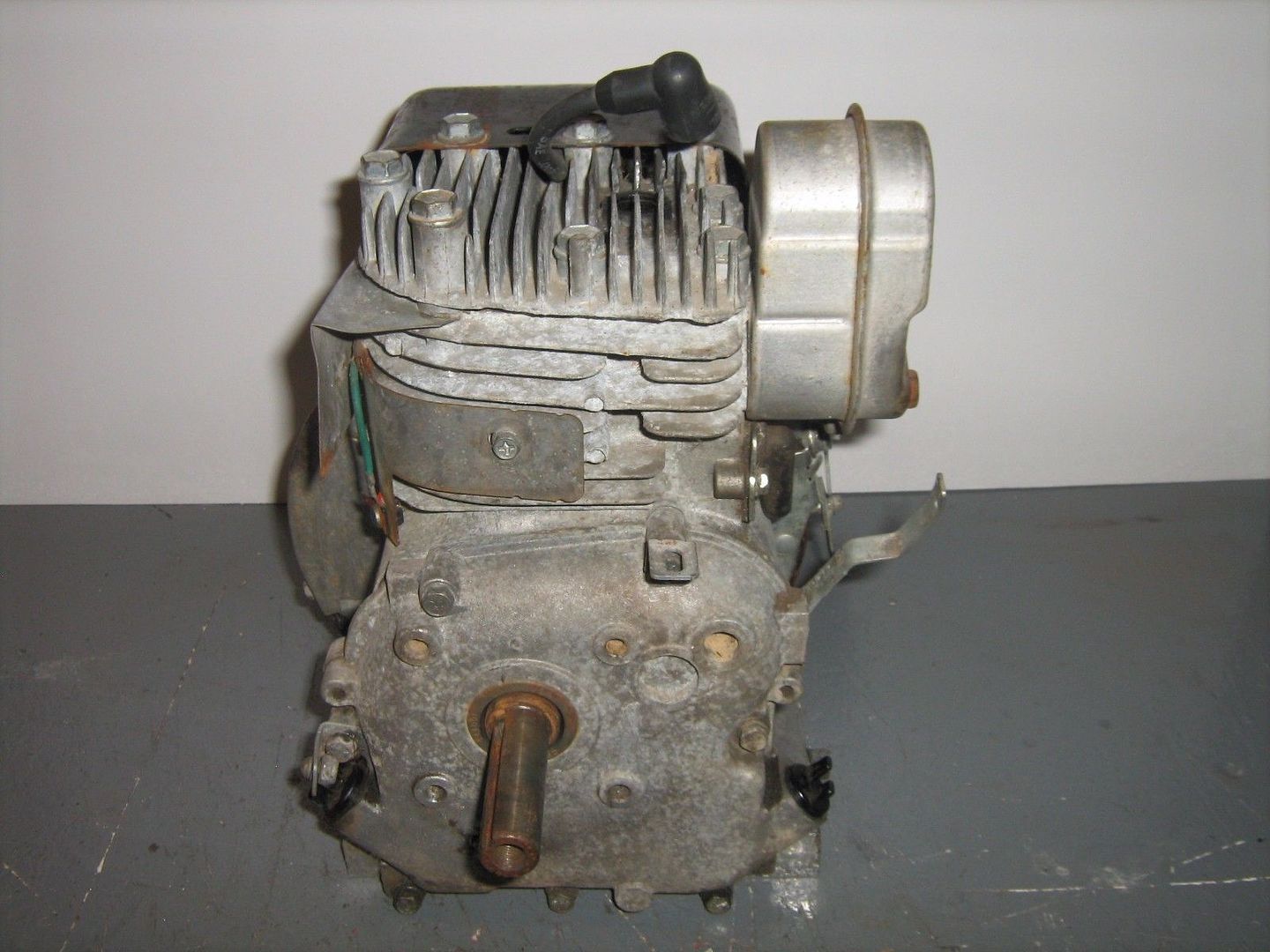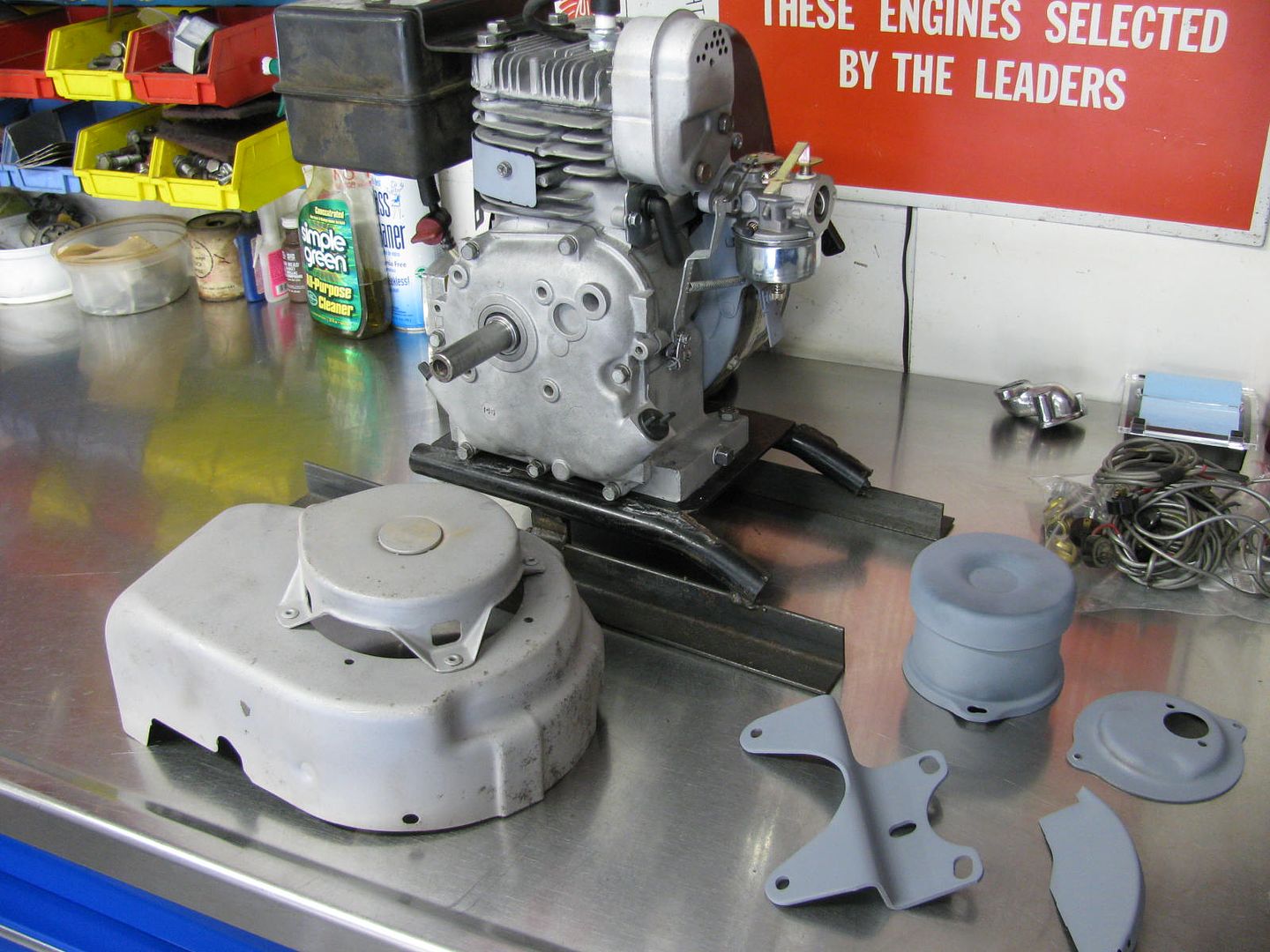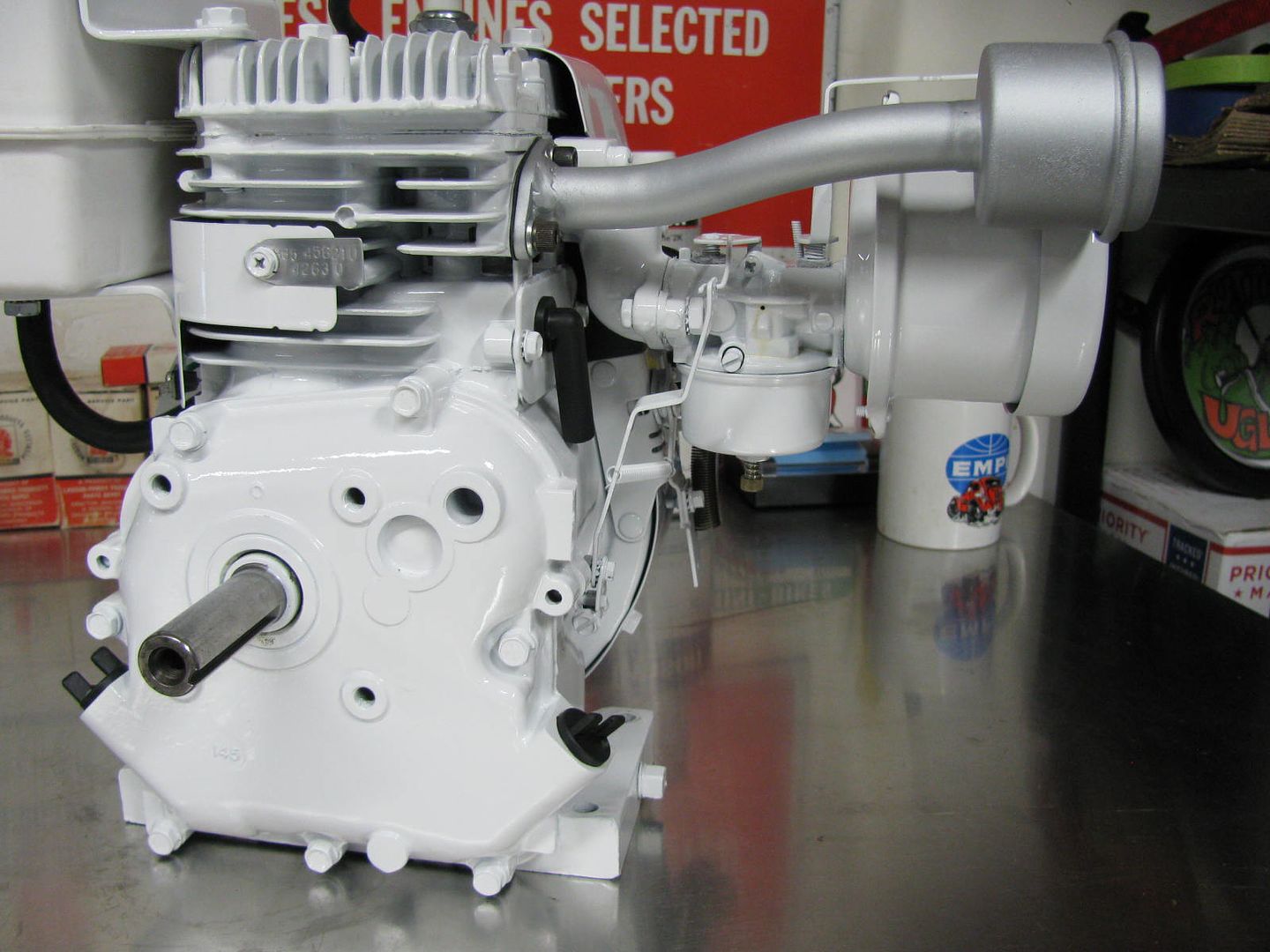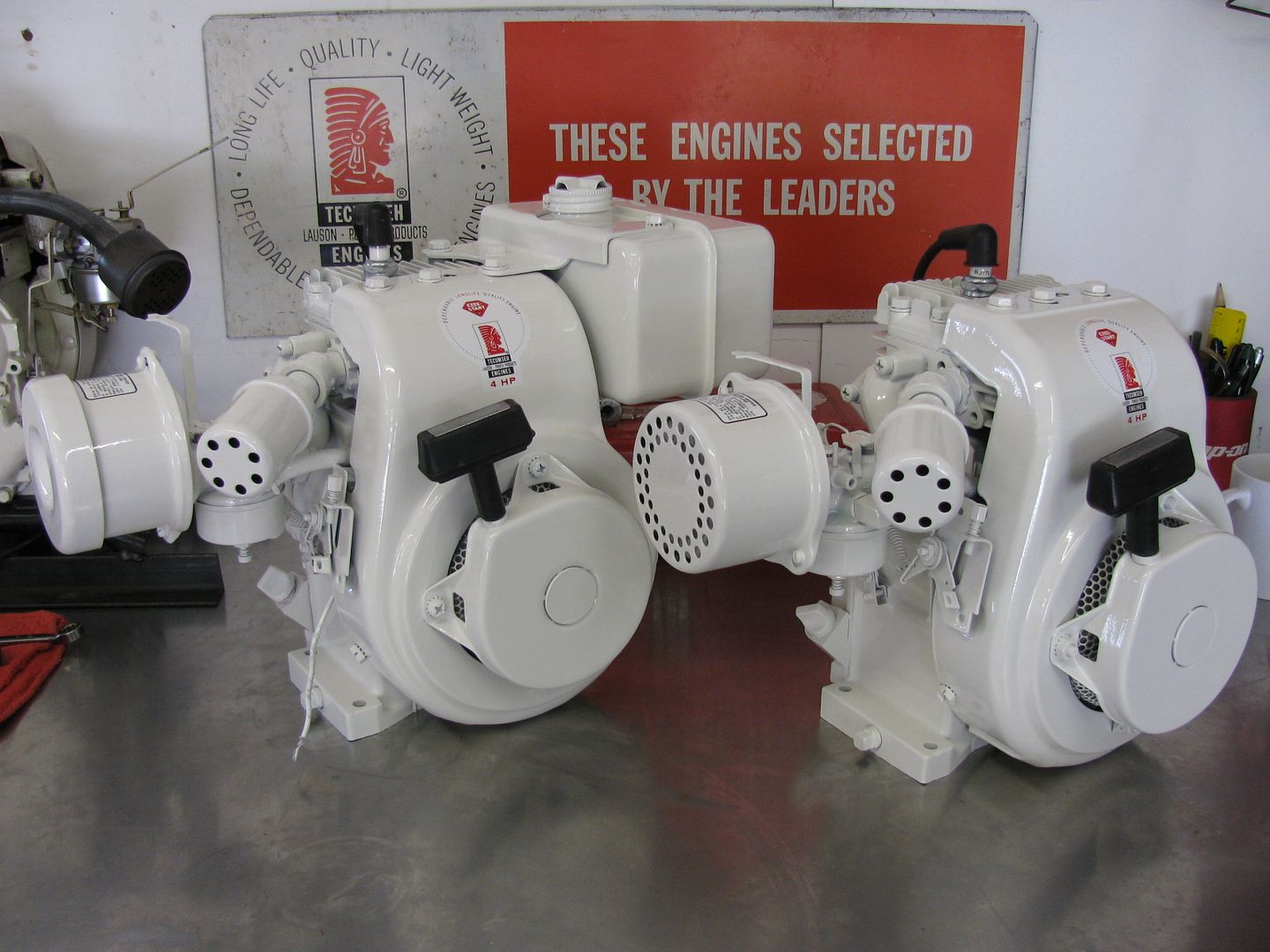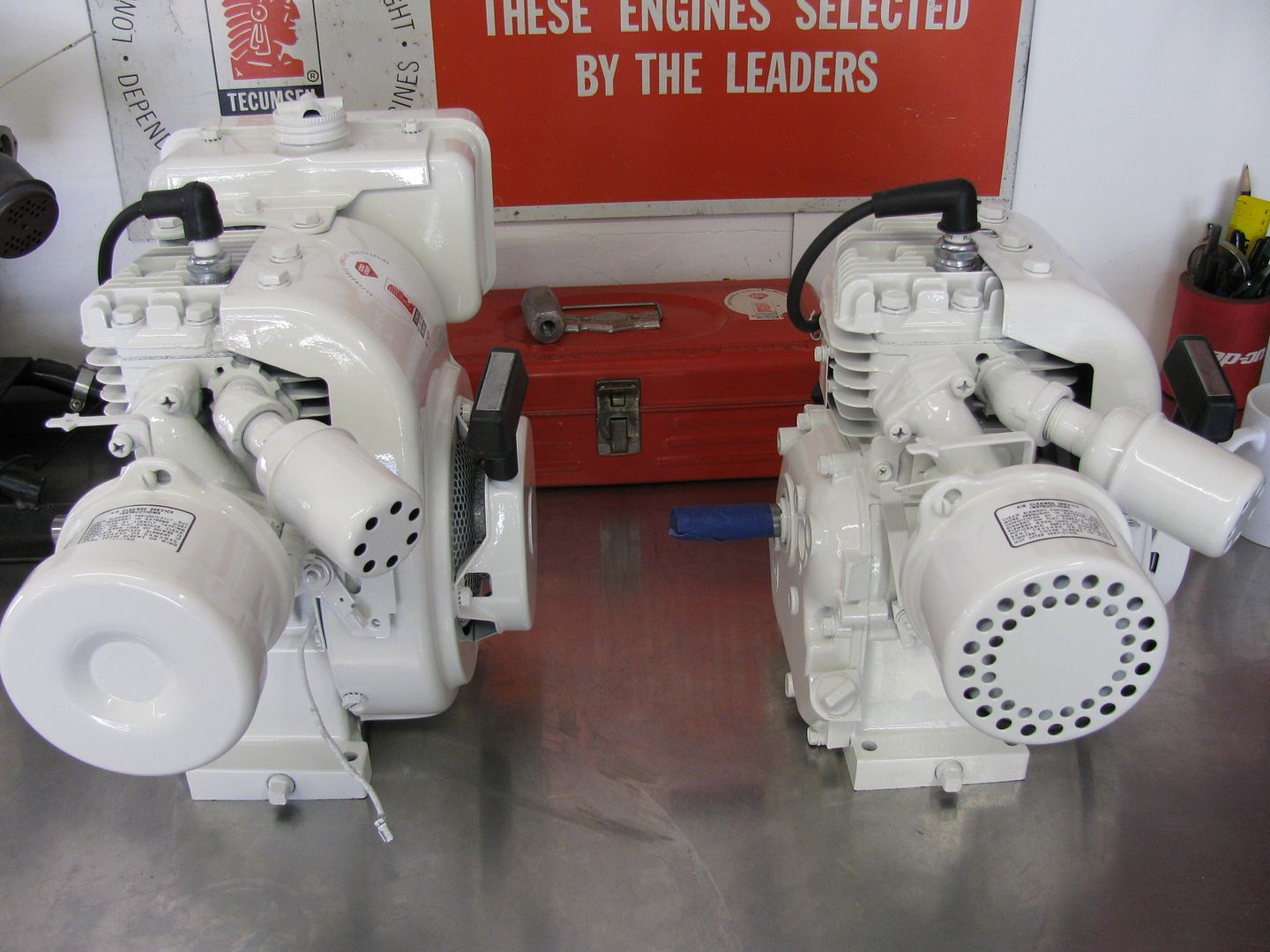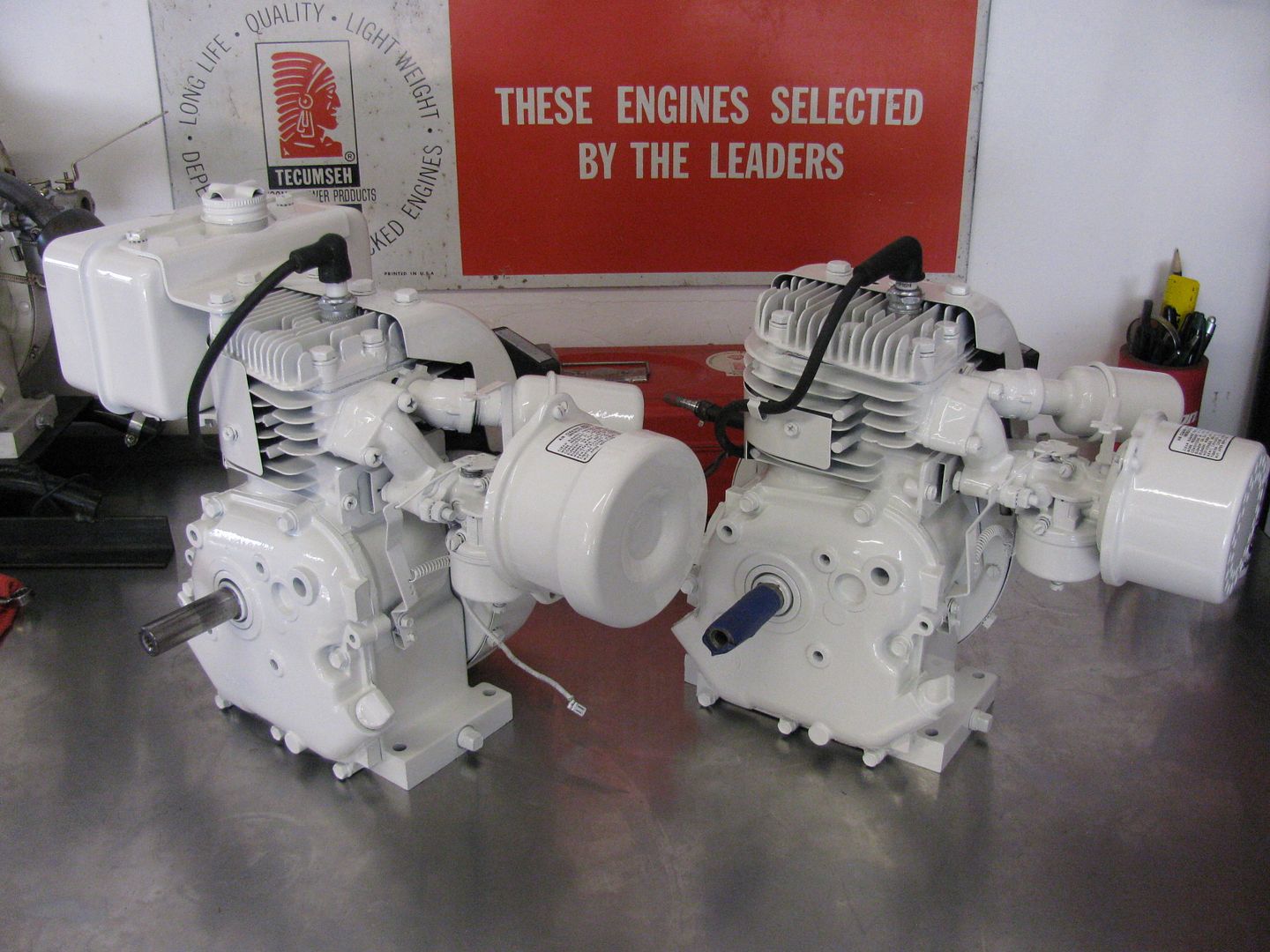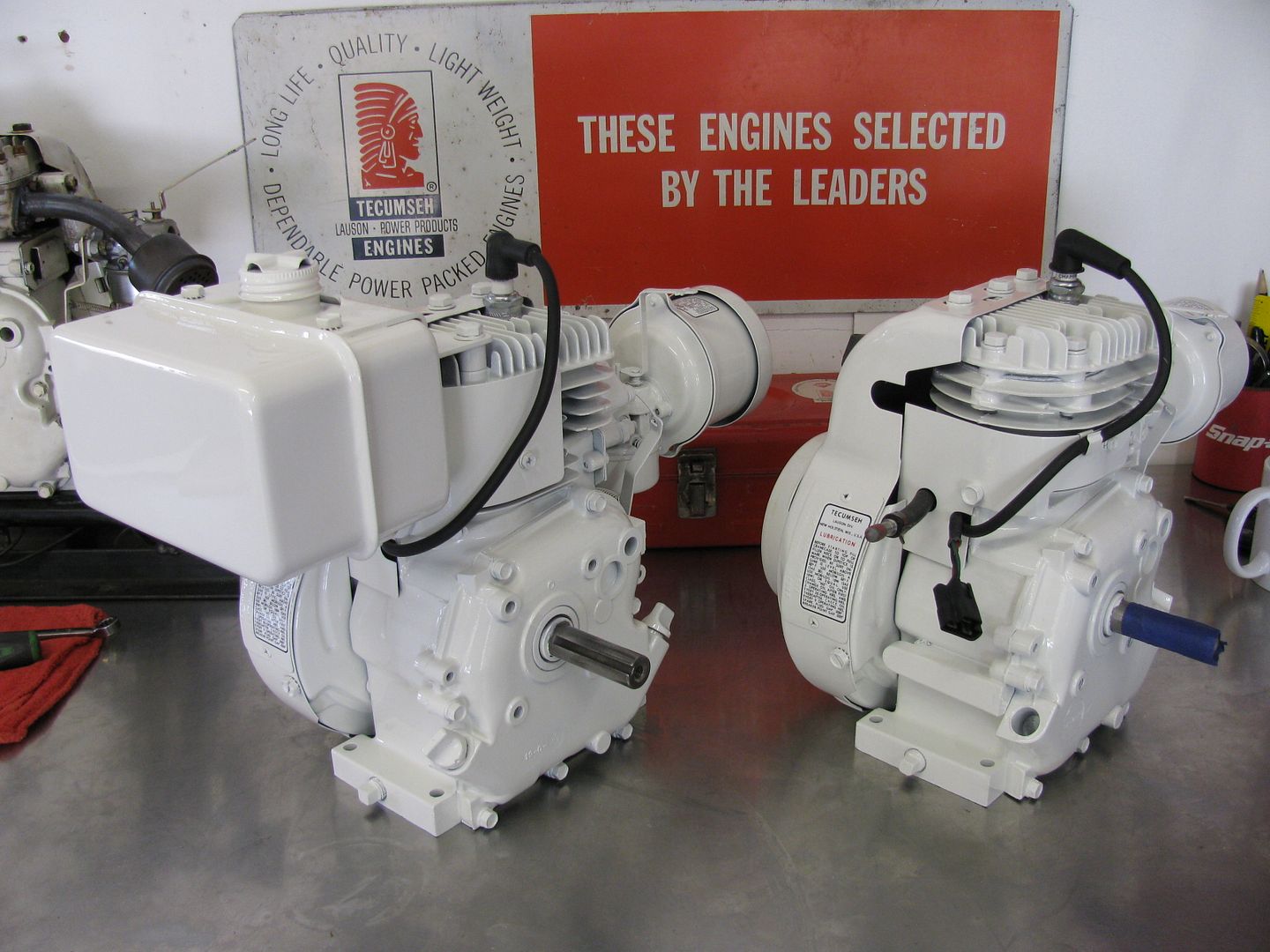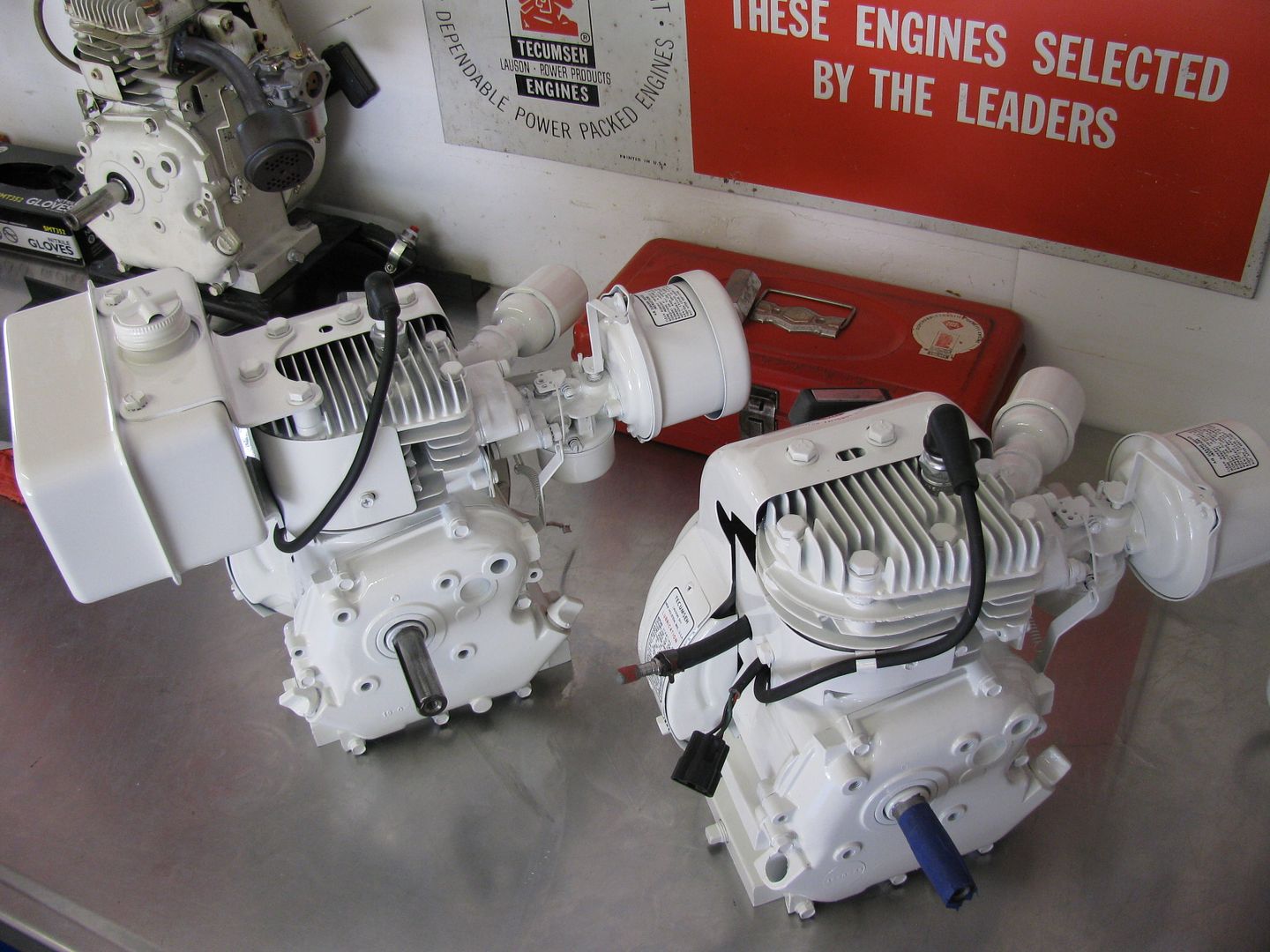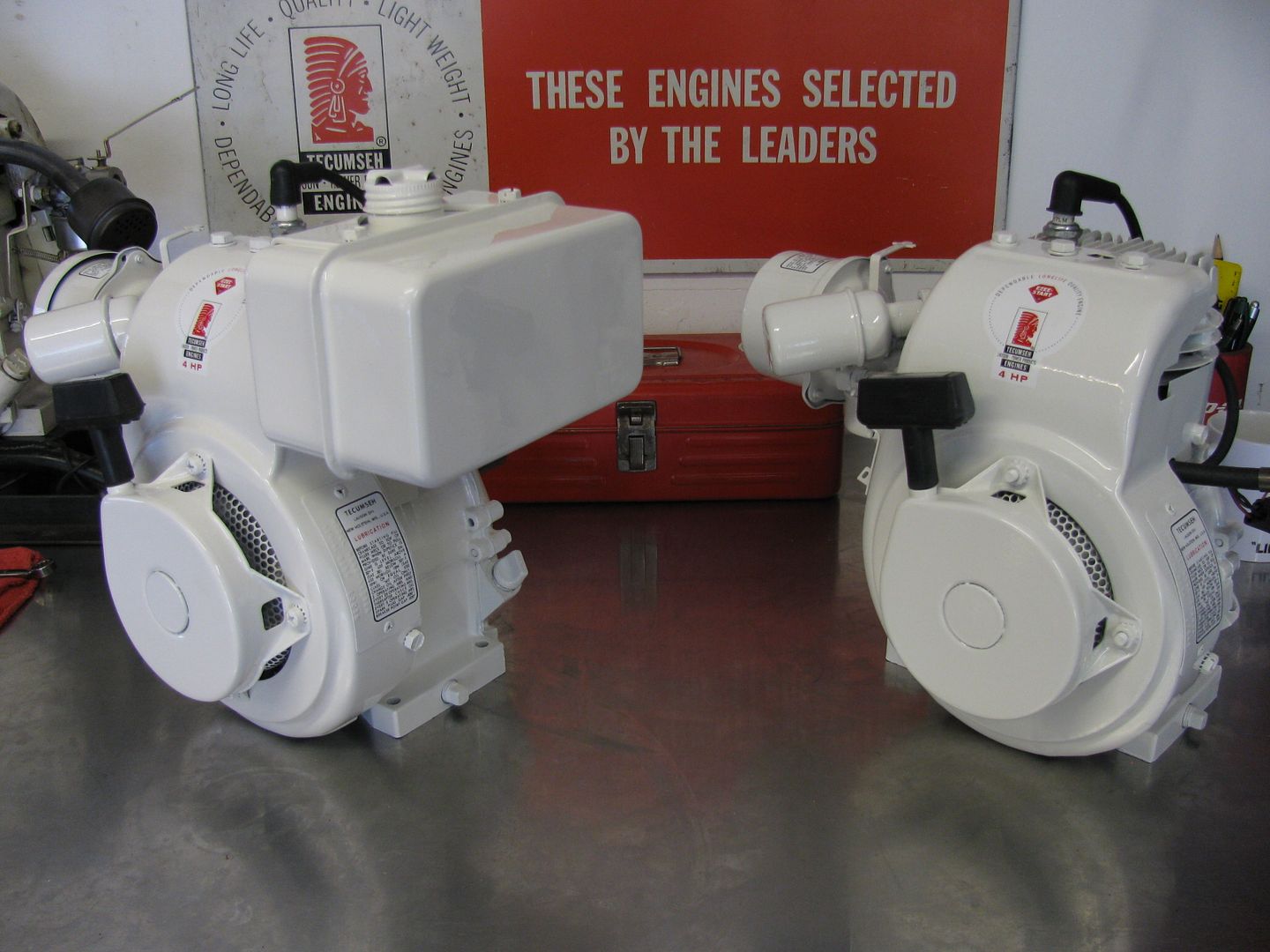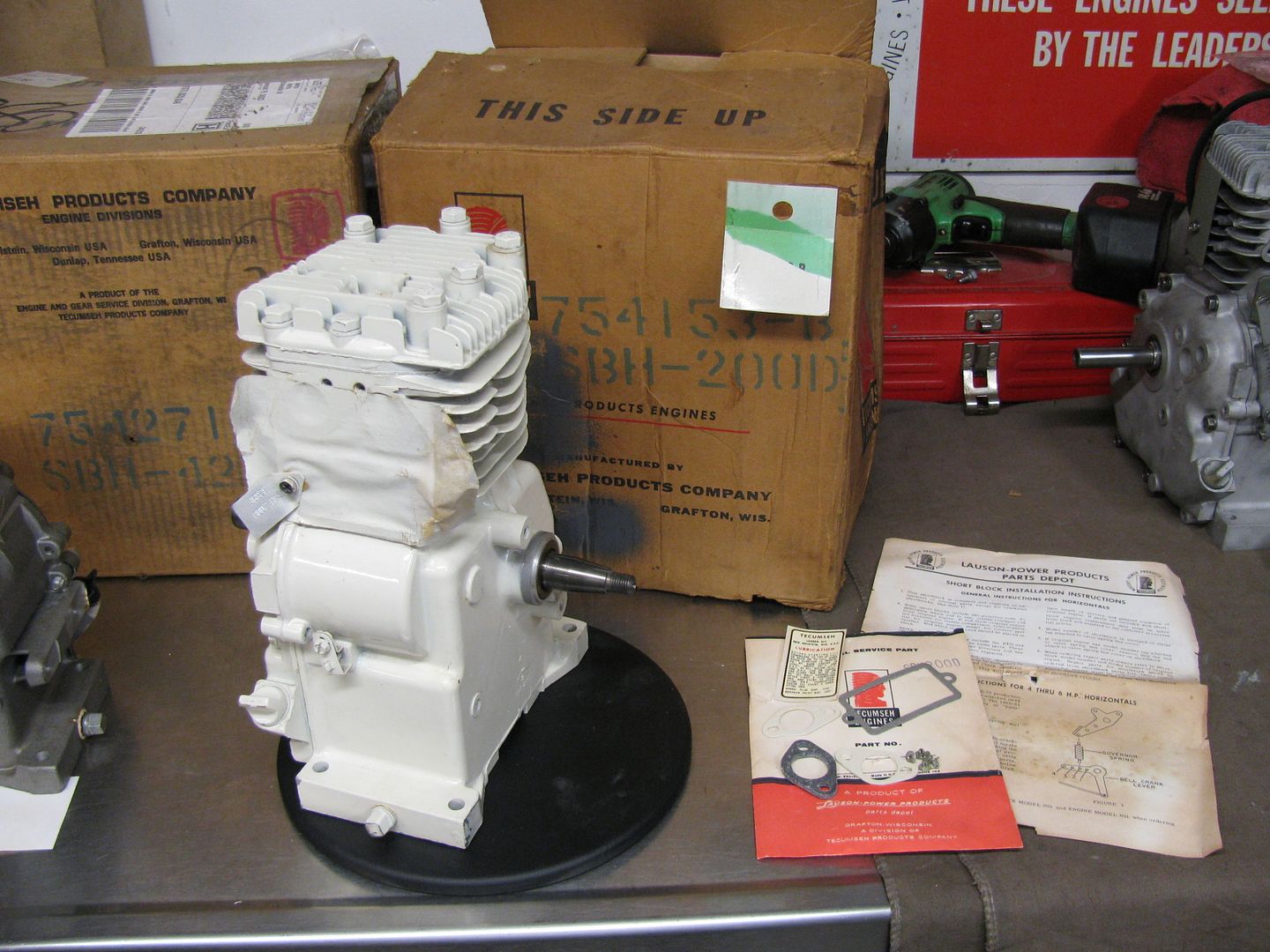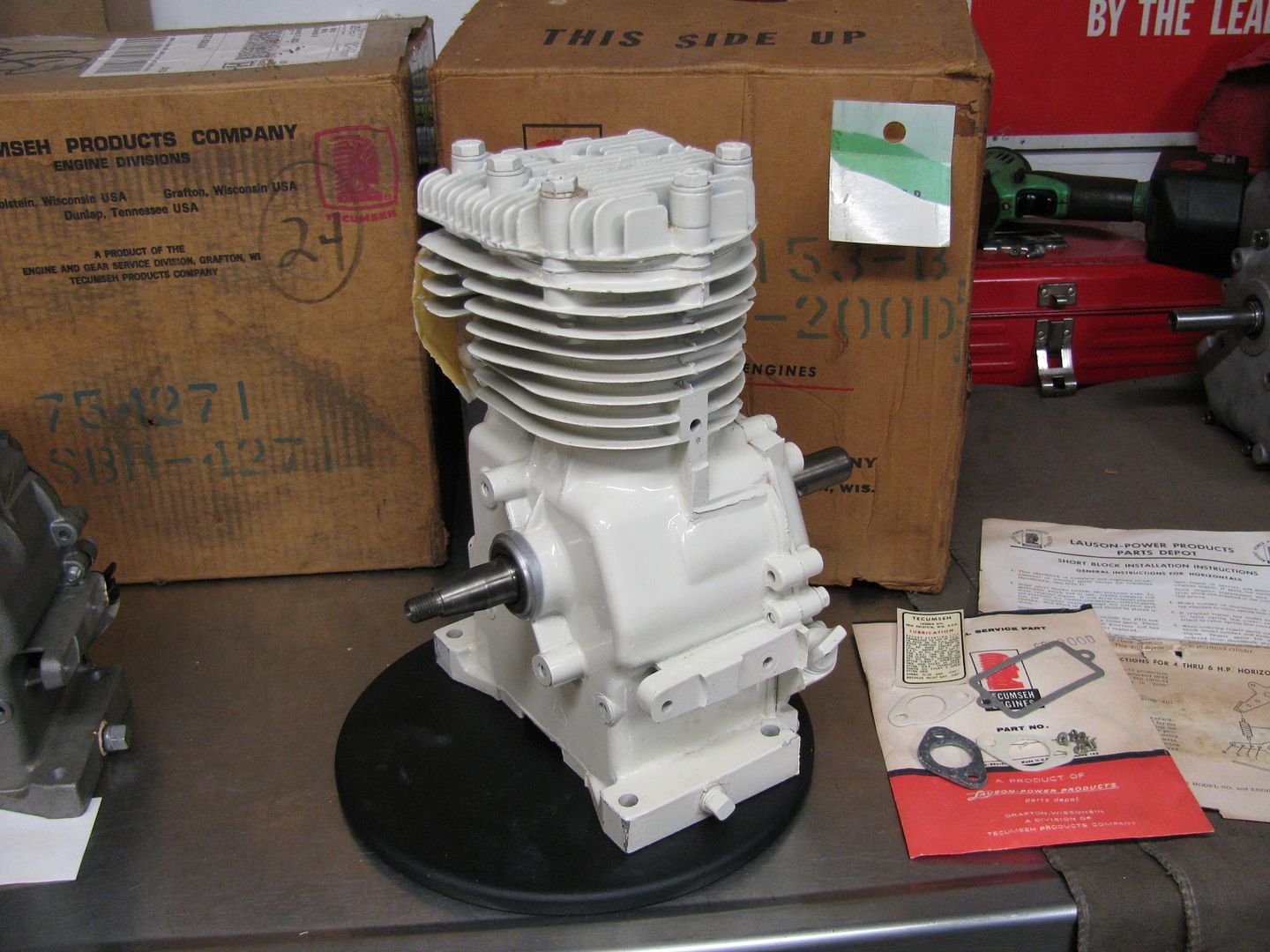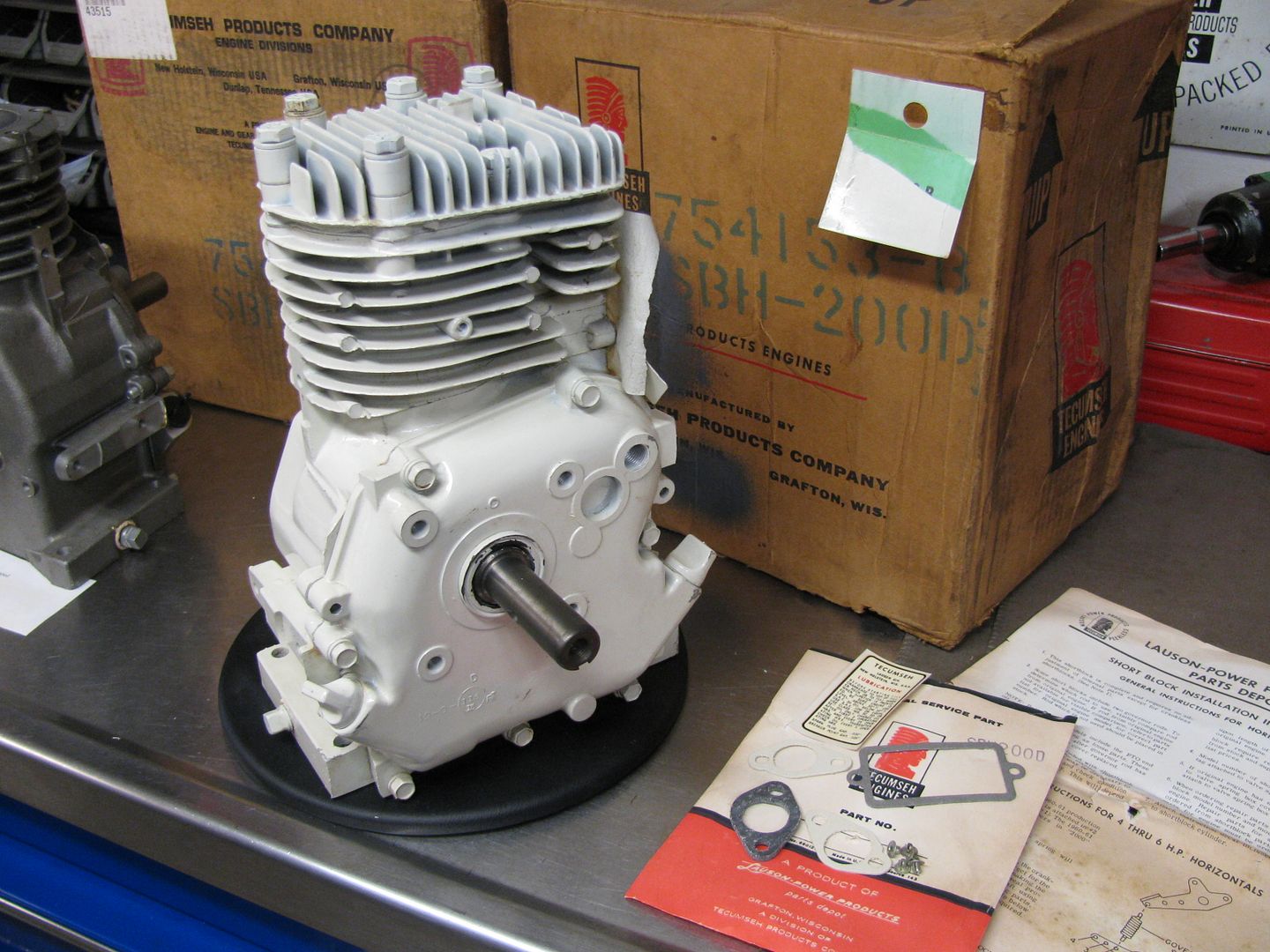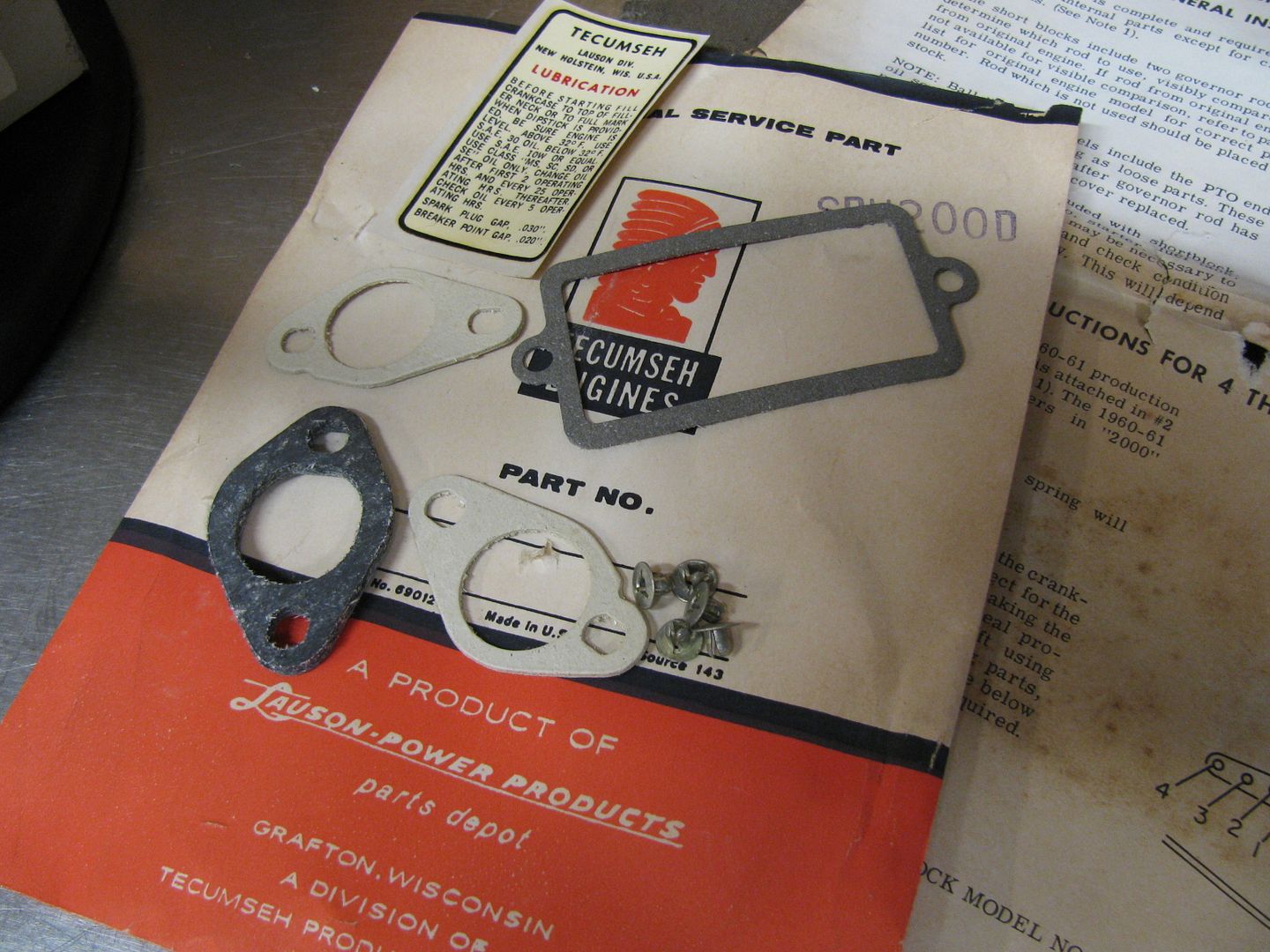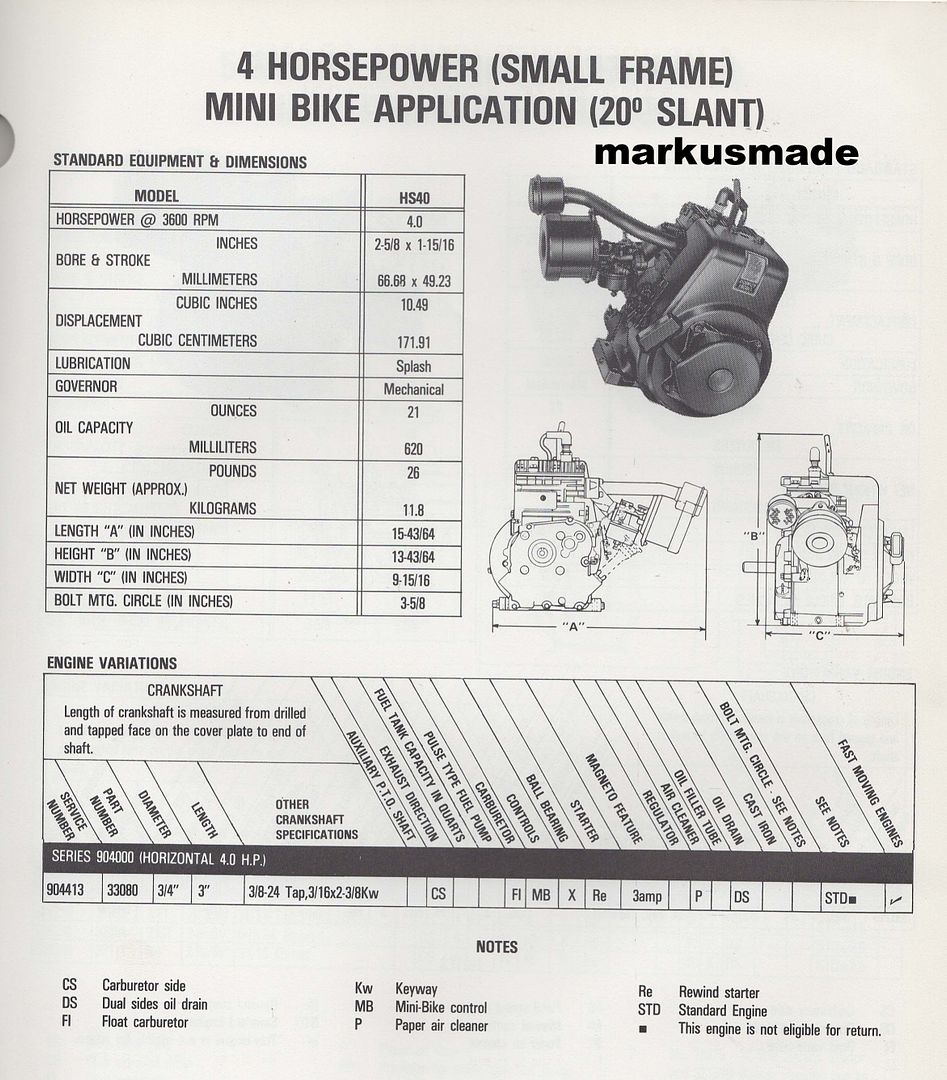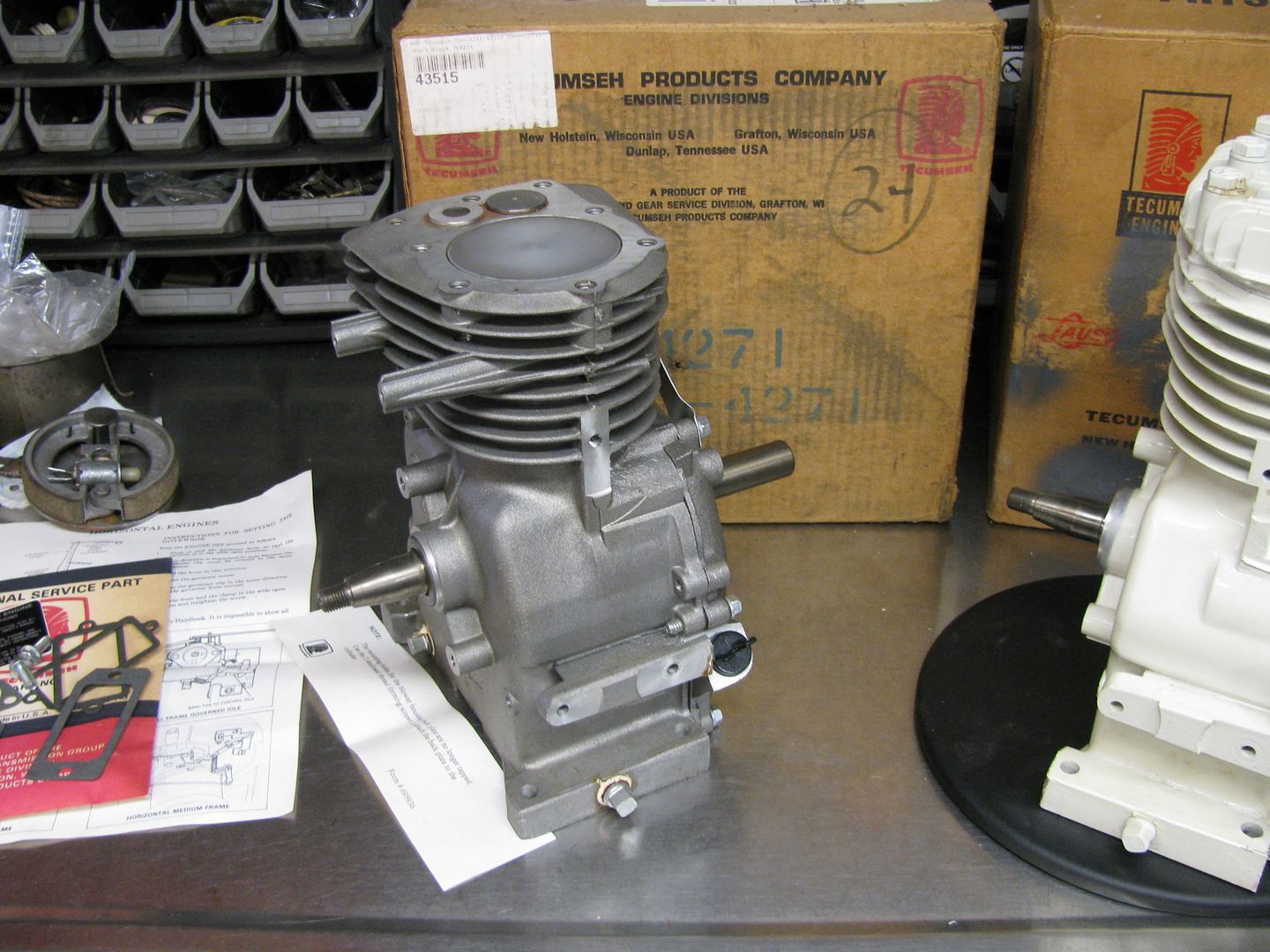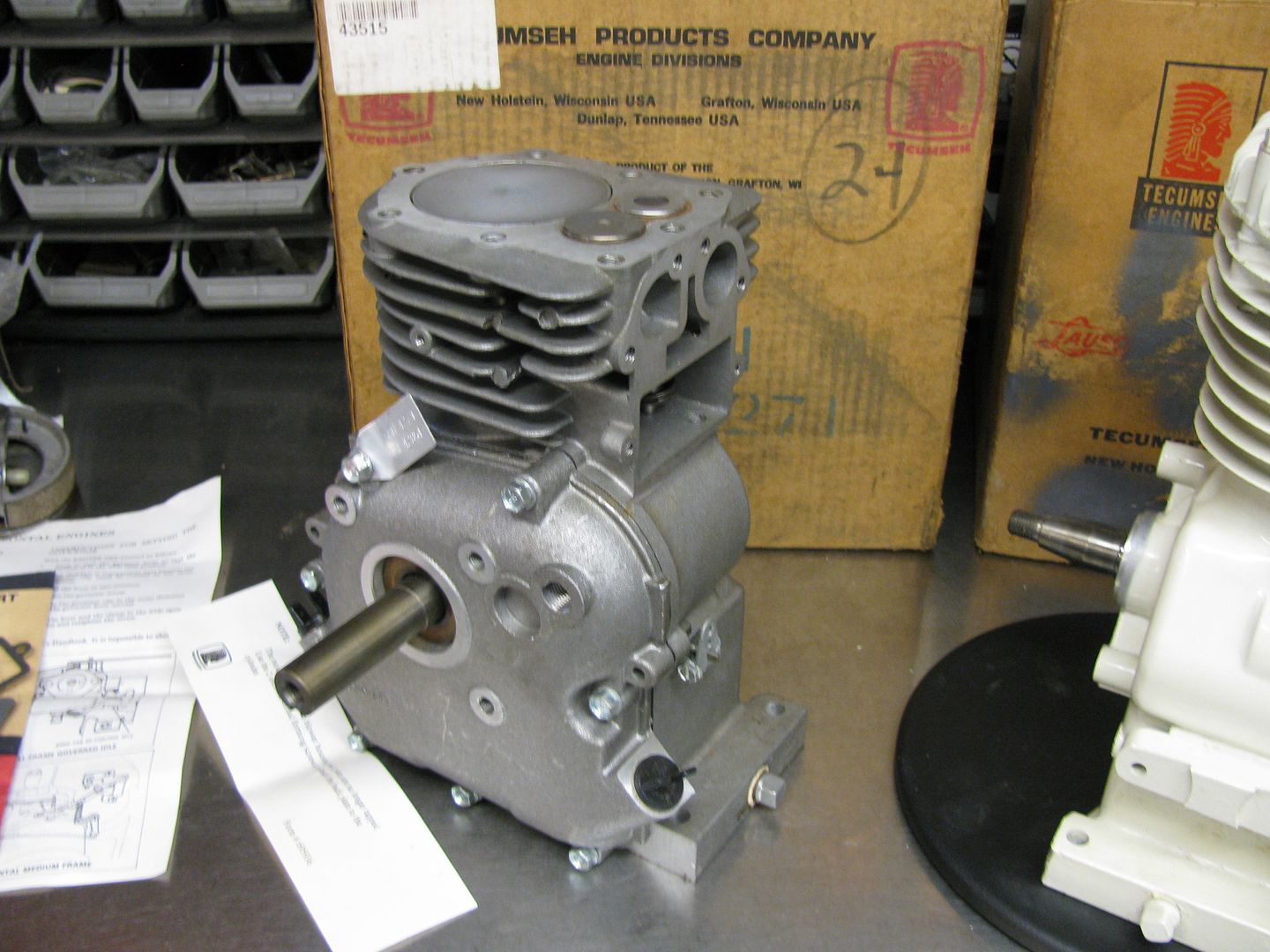Ahh the beloved HS40, for the last few years I have wanted a first year HS40, only because I was curious about it. Recently I found one on ebay for a shipped price that was reasonable enough to take a risk on. Its actually an Ariens snowblower setup that will need some converting, but in reality thats a good thing especially with these early blocks.
Lets start here, Tecumseh started to produce/offer the HS40 for 1968 (seen here in this photo, note the Issued date for the parts book top right)
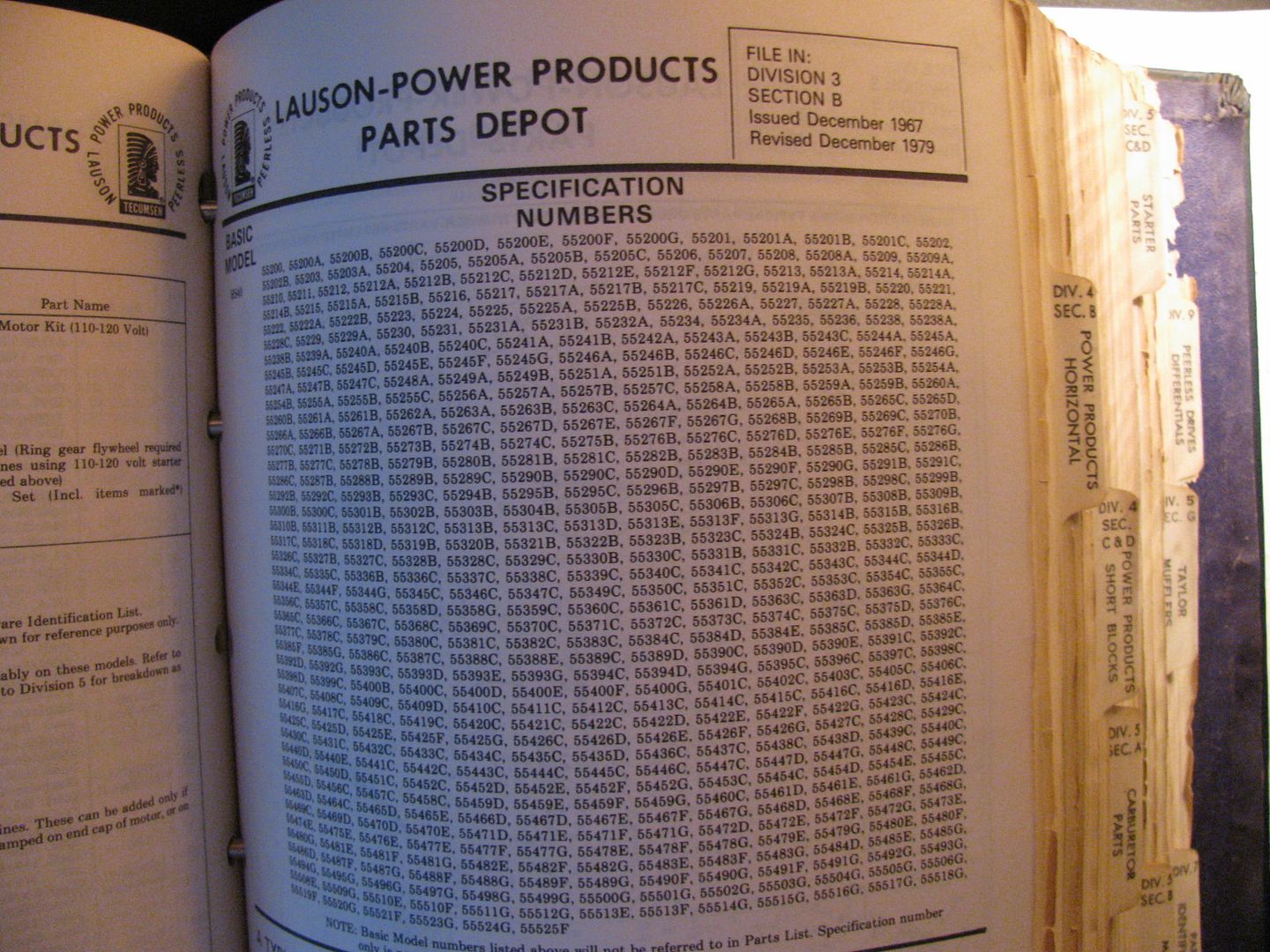
Also note all the specification numbers.....that's just from dec 1967-1979 :laugh: Lots of little variations and changes made them make another engine number by either making a new one entirely or simply updating existing numbers by upping the Letter at the end (55xxx A,B,C,...etc.)
why is it called and "HS" and Not an H like all the others? Tecumseh already had an H40 in play, the lineup in the mid 60's ranged from H25-H70. The already used "H40" it was based off the larger "medium frame" sized engines. The new 4hp was based off the "small frame" engines and overall dimensions matched the 2.5-3.5hp engines. H stands for horizontal and the S stands for small, same reason the punched out even more to 5hp version they came out with for 1972 was called an HS50, as the H50 was already taken.
Why is the exhuast on the right (near the shroud)? Most likely an effort to reduce heat, In reality they started by basically trying to bore and stroke the small frame block, probably by omitting the steel sleeve that the H25-35 got and changing the valve seat insert. the 1968 into 1969 blocks were very different than the later more typical blocks and looks like they were trying to get them to keep cool.
For reference far left is a mid year 1968, middle is just about on year later according to the numbers 1969, right is ten days later 1969-1970 version engine (they used that same spec number for about a year as there were no revisions...it is from a Fox mini bike)
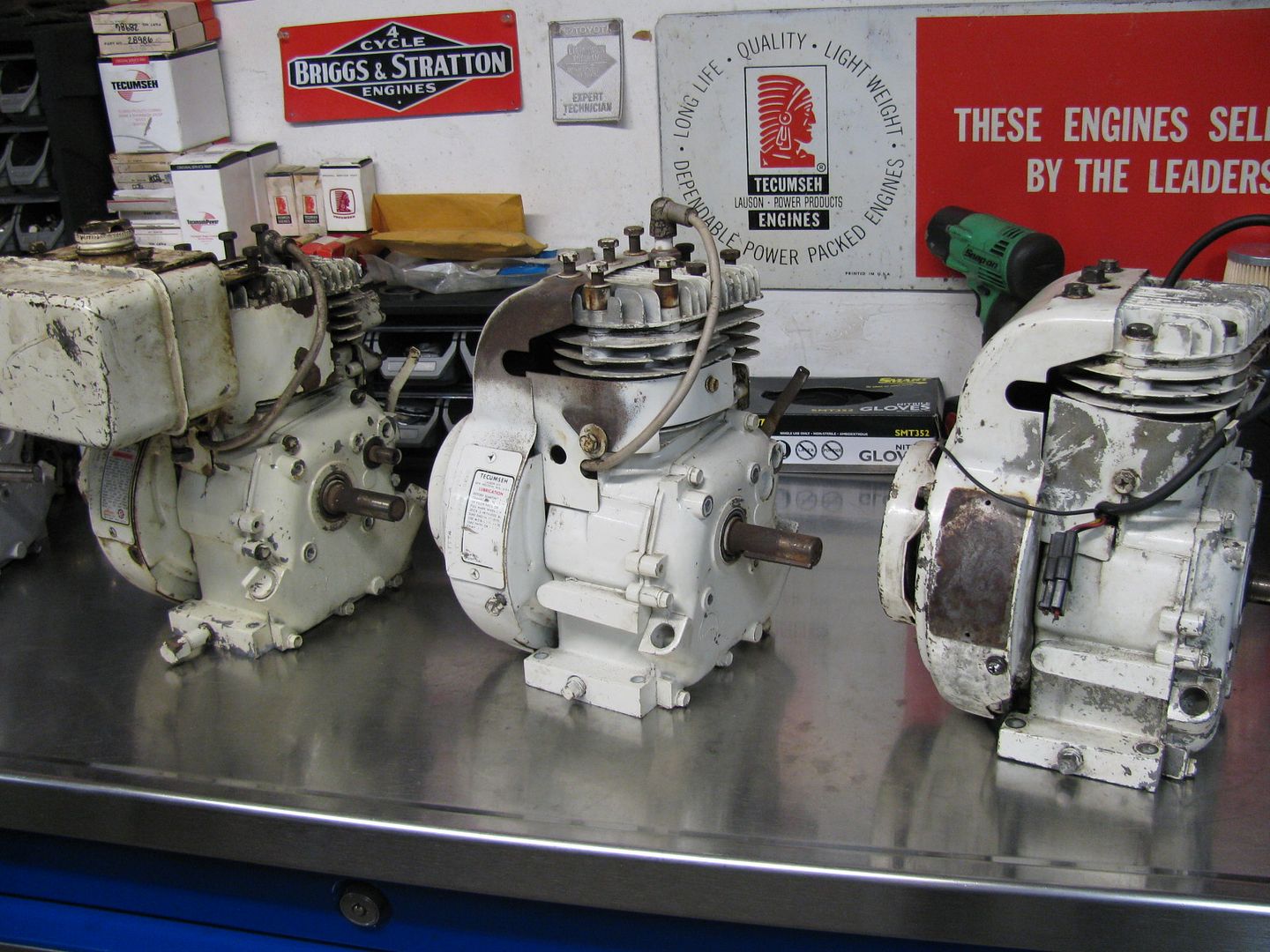
Can you spot some of the changes? You should see that the 1968 at that angle you could mistake for an H25/35. Has no stater mount lug on the case, and full air divertor around the front. The center 1969 has bigger fins on the top of the block and revised divertor shroud to match, but still has the small H25-35 head on top, right side they finally got their shit together and stuck a larger head with a wider bolt pattern on to match the block :laugh:
Another major difference that only lasted about a year and half was the shroud, left is the 1968 right is the revised shroud. All the shrouds for the small frame engines were like on the left smooth transition up to the head bolts, The change to the more commonly seen shroud with the pressed in line happened to add some space to fit the now larger head and bolt pattern The HS engines got, They universalized the bolt holes so all the small frames regardless of size could use the updated shroud to simplify production which ran until 1974/early 1975 on the H25/35 and HS40 engines.
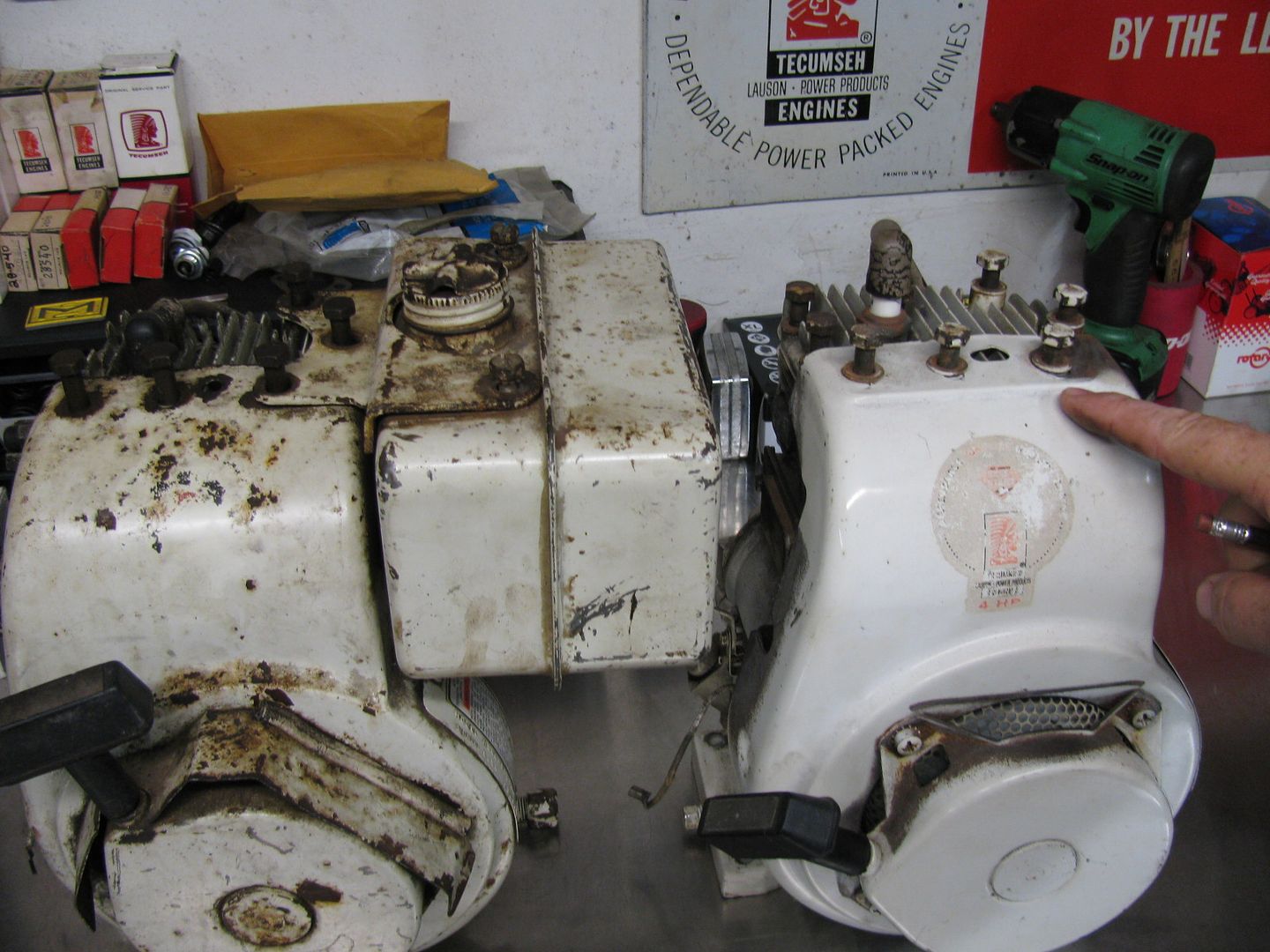
Underneath the shrouding you can see that while they started with just the same fin design on the PTO side, under the shroud they popped out the fins pretty far in hopes to keep it running cooler. (left is an H35 block for comparison)
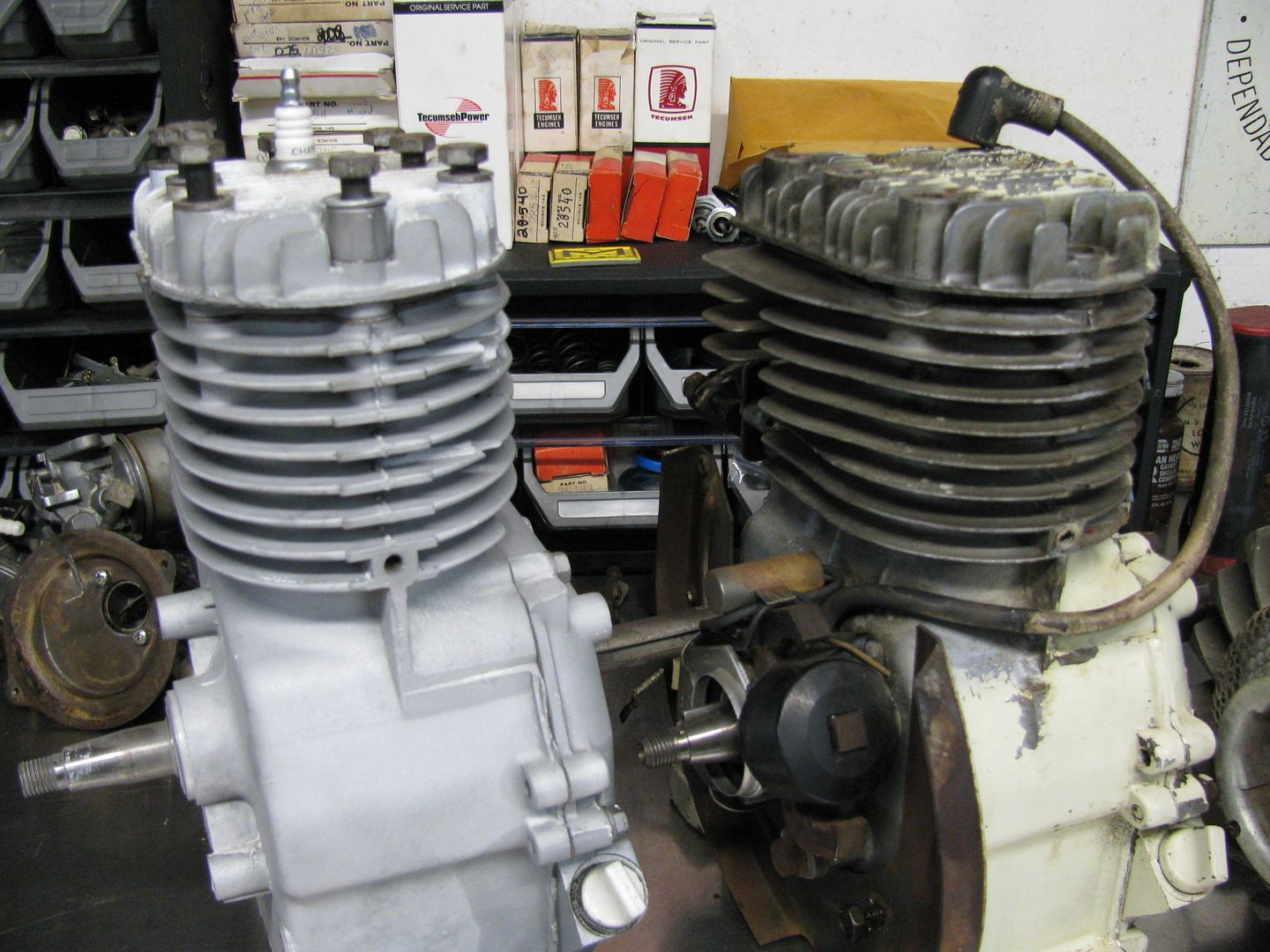
This shot shows the added "hump" to the case compared to the H engine case, This was added for clearance of the larger crank the HS got.
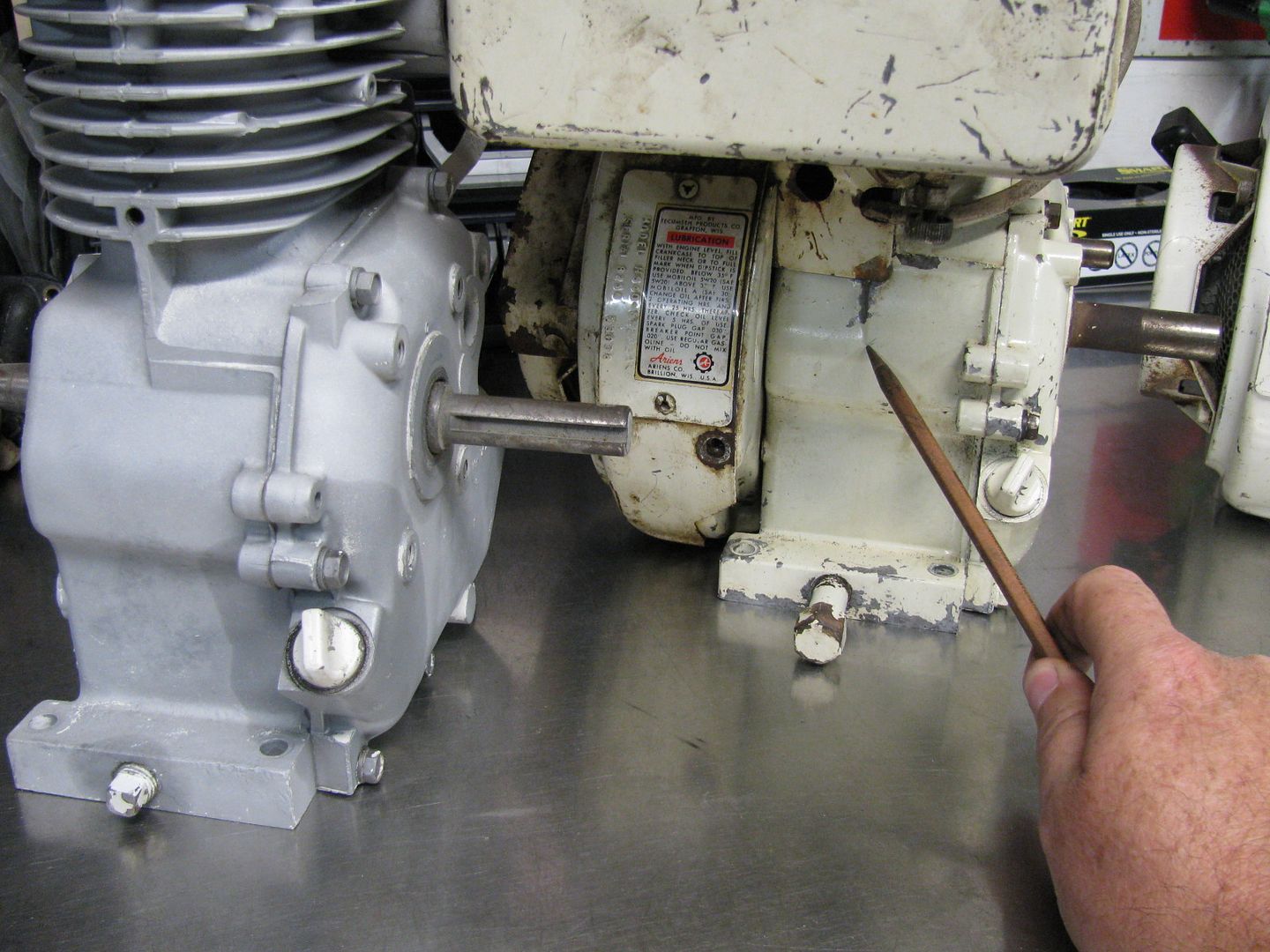
shot of the fin area change. I have to think that they maybe had a production issue with the larger head or something to that effect in 1969, as you can see even though this one has the small bolt pattern head, The block was cast with larger bolt pattern in mind.
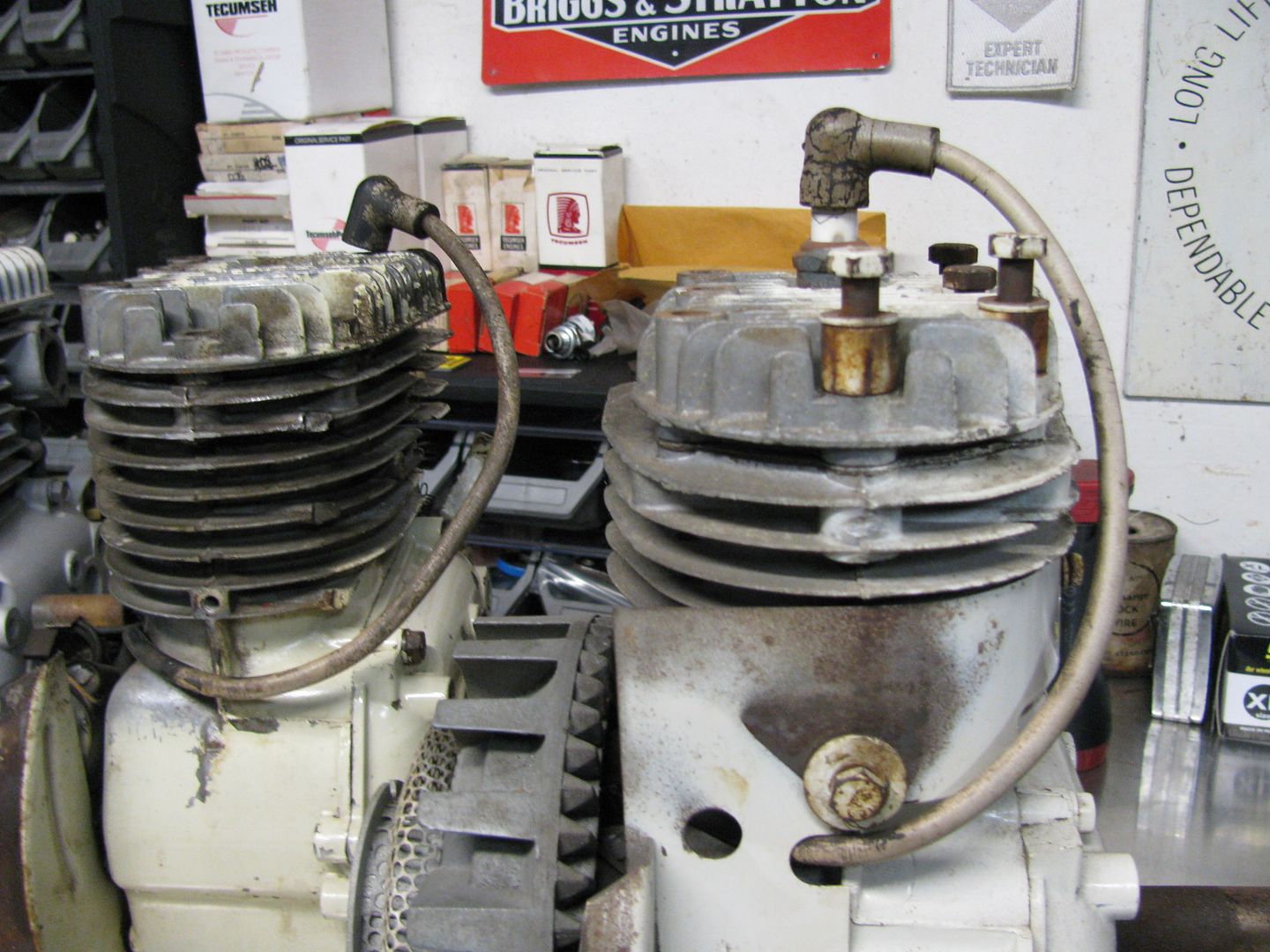
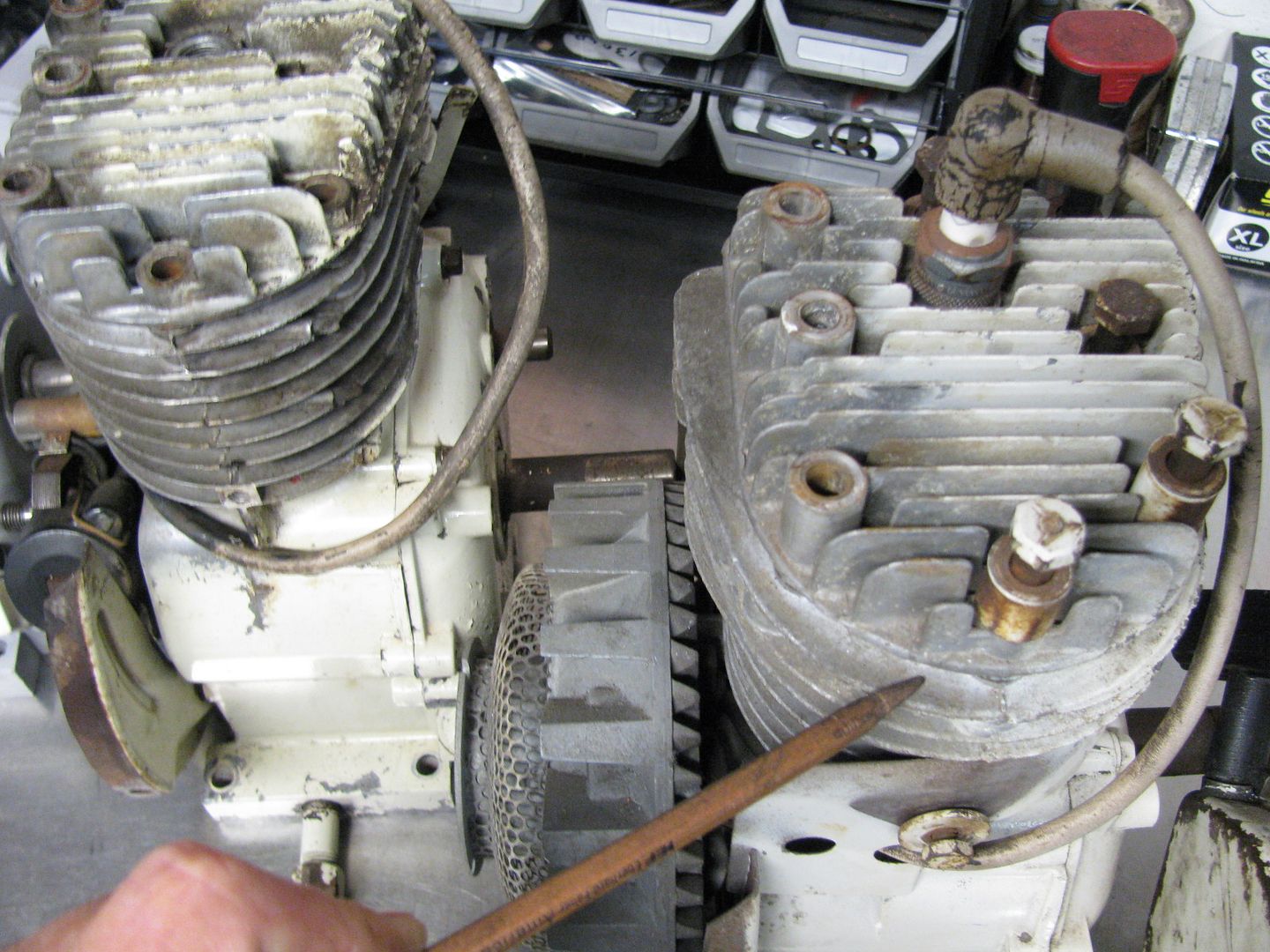
a shot of the head difference from the small to large pattern
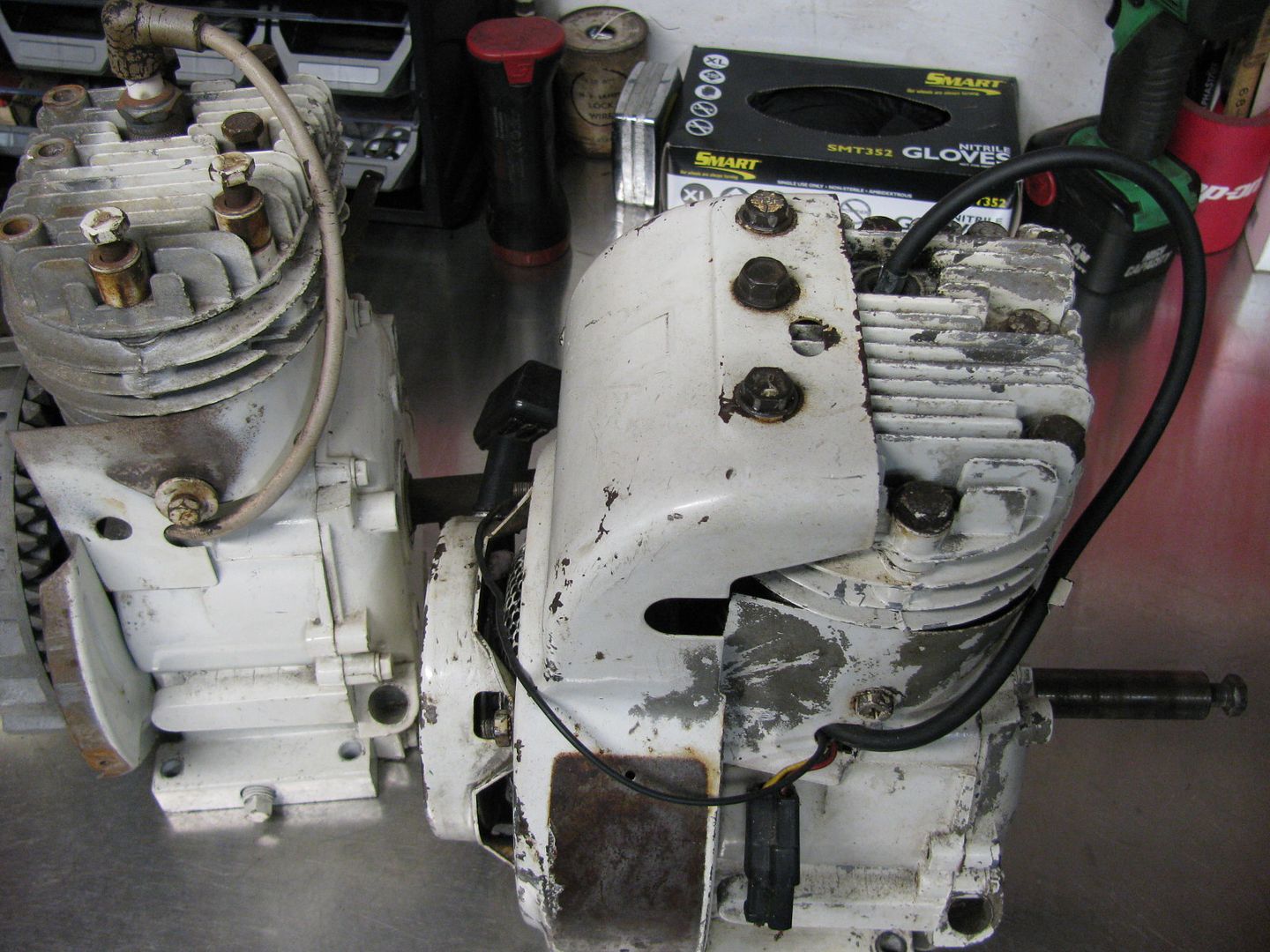
Interesting thing about the above engines is the serial numbers between them are only like 10 days apart. The small head engine is in fact a snowblower though, where a little more Heat may not have been a bad thing, It did come with the new style shroud factory so that leads me to think that maybe they either had a shortage of the larger heads and maybe for a short period were making due on cool weather specific engines or something to that effect.
Once they got to it to the mid 1969 large head/fins they actually kept the block pretty much the same right to the end. Little things changed but you can actually still use a late model bare block with older 1970s parts.
something that are giveaways that its a newer block if you do use one this way is the starter mount is drilled and tapped and the top 3 fins are a little thicker. the later they get the rougher the casting as well, one shown below is a 1990 and its casting is on verge of being noticeable. everything else though will be mostly concealed underneath the shrouding.

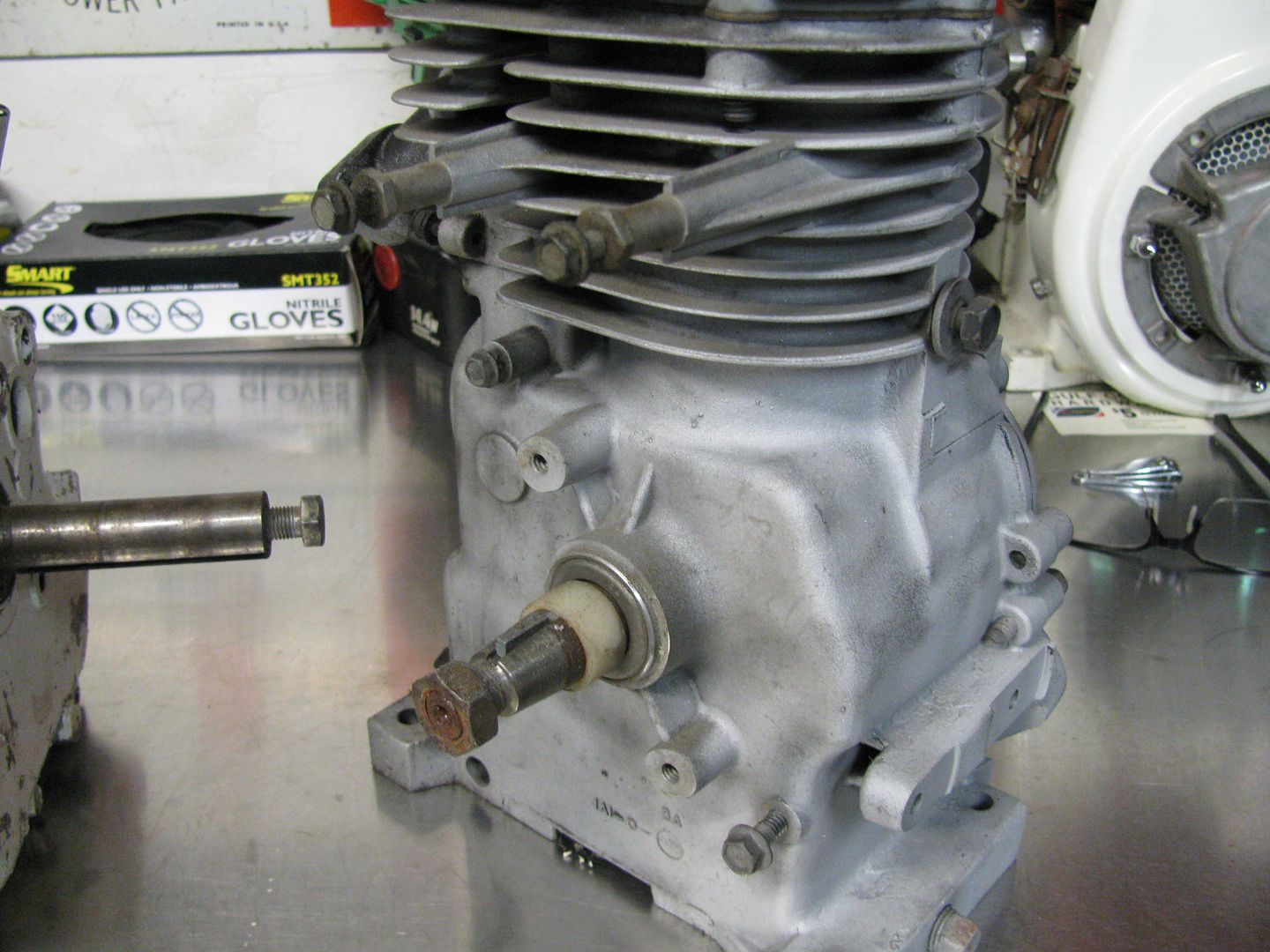
Lets start here, Tecumseh started to produce/offer the HS40 for 1968 (seen here in this photo, note the Issued date for the parts book top right)

Also note all the specification numbers.....that's just from dec 1967-1979 :laugh: Lots of little variations and changes made them make another engine number by either making a new one entirely or simply updating existing numbers by upping the Letter at the end (55xxx A,B,C,...etc.)
why is it called and "HS" and Not an H like all the others? Tecumseh already had an H40 in play, the lineup in the mid 60's ranged from H25-H70. The already used "H40" it was based off the larger "medium frame" sized engines. The new 4hp was based off the "small frame" engines and overall dimensions matched the 2.5-3.5hp engines. H stands for horizontal and the S stands for small, same reason the punched out even more to 5hp version they came out with for 1972 was called an HS50, as the H50 was already taken.
Why is the exhuast on the right (near the shroud)? Most likely an effort to reduce heat, In reality they started by basically trying to bore and stroke the small frame block, probably by omitting the steel sleeve that the H25-35 got and changing the valve seat insert. the 1968 into 1969 blocks were very different than the later more typical blocks and looks like they were trying to get them to keep cool.
For reference far left is a mid year 1968, middle is just about on year later according to the numbers 1969, right is ten days later 1969-1970 version engine (they used that same spec number for about a year as there were no revisions...it is from a Fox mini bike)

Can you spot some of the changes? You should see that the 1968 at that angle you could mistake for an H25/35. Has no stater mount lug on the case, and full air divertor around the front. The center 1969 has bigger fins on the top of the block and revised divertor shroud to match, but still has the small H25-35 head on top, right side they finally got their shit together and stuck a larger head with a wider bolt pattern on to match the block :laugh:
Another major difference that only lasted about a year and half was the shroud, left is the 1968 right is the revised shroud. All the shrouds for the small frame engines were like on the left smooth transition up to the head bolts, The change to the more commonly seen shroud with the pressed in line happened to add some space to fit the now larger head and bolt pattern The HS engines got, They universalized the bolt holes so all the small frames regardless of size could use the updated shroud to simplify production which ran until 1974/early 1975 on the H25/35 and HS40 engines.

Underneath the shrouding you can see that while they started with just the same fin design on the PTO side, under the shroud they popped out the fins pretty far in hopes to keep it running cooler. (left is an H35 block for comparison)

This shot shows the added "hump" to the case compared to the H engine case, This was added for clearance of the larger crank the HS got.

shot of the fin area change. I have to think that they maybe had a production issue with the larger head or something to that effect in 1969, as you can see even though this one has the small bolt pattern head, The block was cast with larger bolt pattern in mind.


a shot of the head difference from the small to large pattern

Interesting thing about the above engines is the serial numbers between them are only like 10 days apart. The small head engine is in fact a snowblower though, where a little more Heat may not have been a bad thing, It did come with the new style shroud factory so that leads me to think that maybe they either had a shortage of the larger heads and maybe for a short period were making due on cool weather specific engines or something to that effect.
Once they got to it to the mid 1969 large head/fins they actually kept the block pretty much the same right to the end. Little things changed but you can actually still use a late model bare block with older 1970s parts.
something that are giveaways that its a newer block if you do use one this way is the starter mount is drilled and tapped and the top 3 fins are a little thicker. the later they get the rougher the casting as well, one shown below is a 1990 and its casting is on verge of being noticeable. everything else though will be mostly concealed underneath the shrouding.


Last edited:


